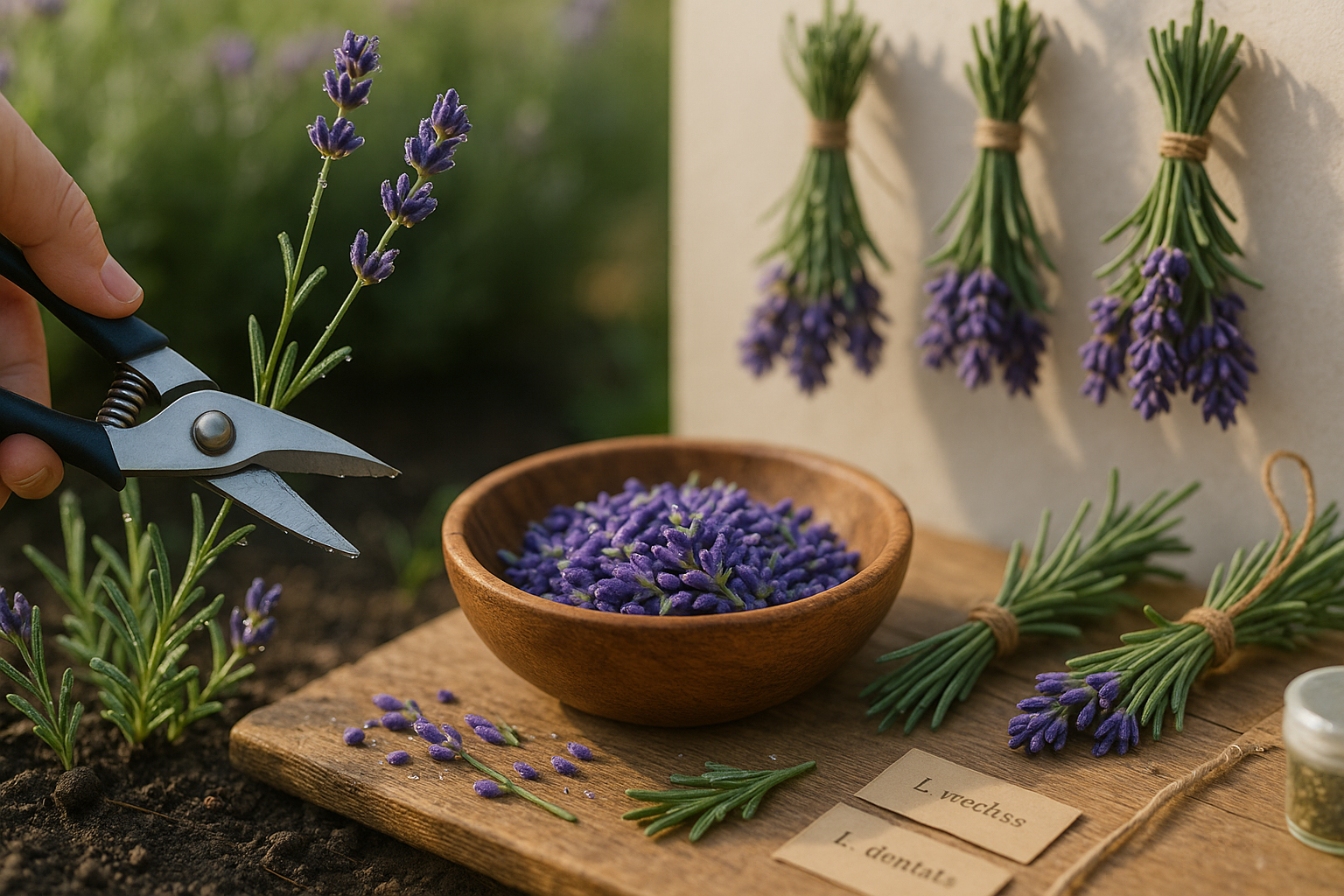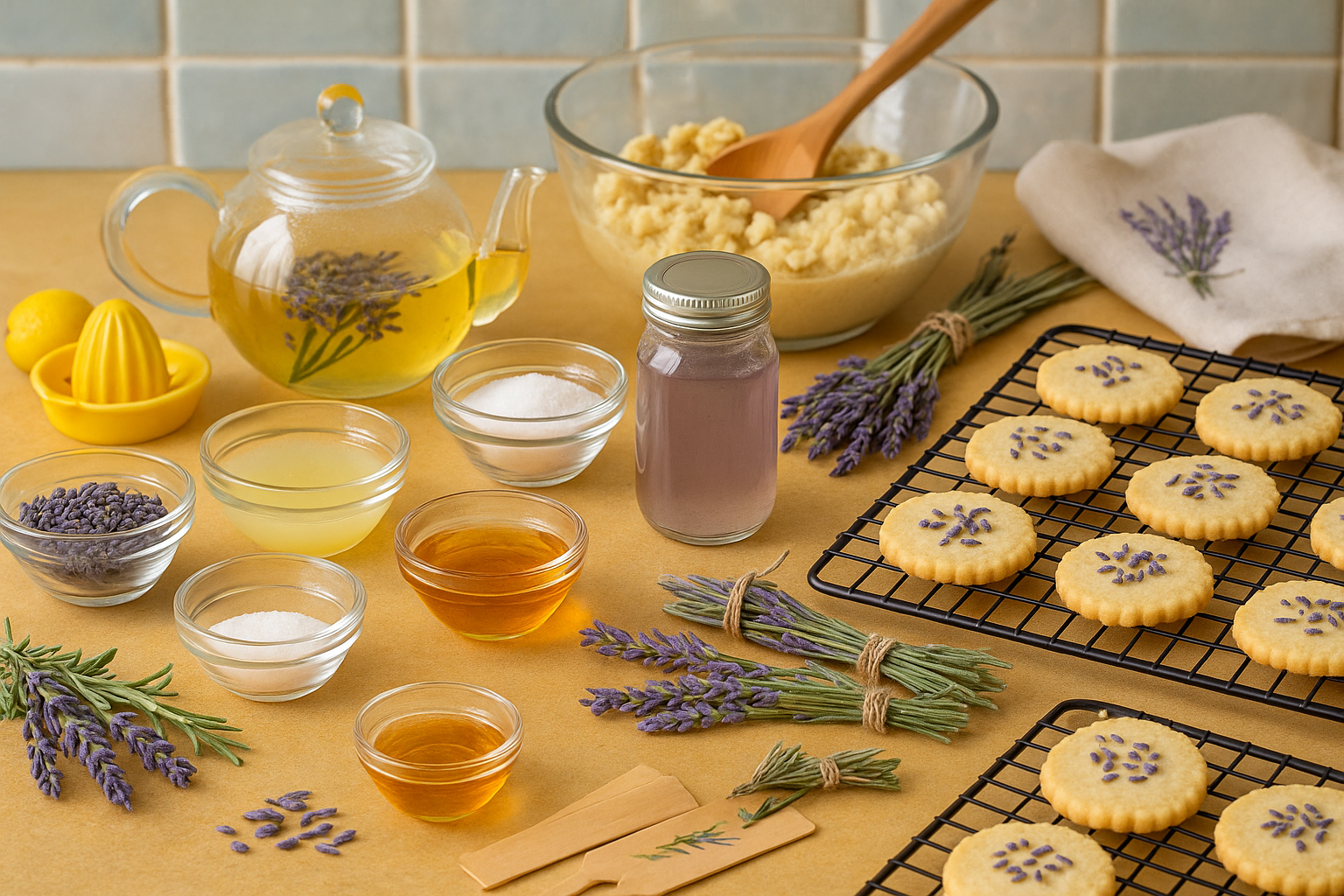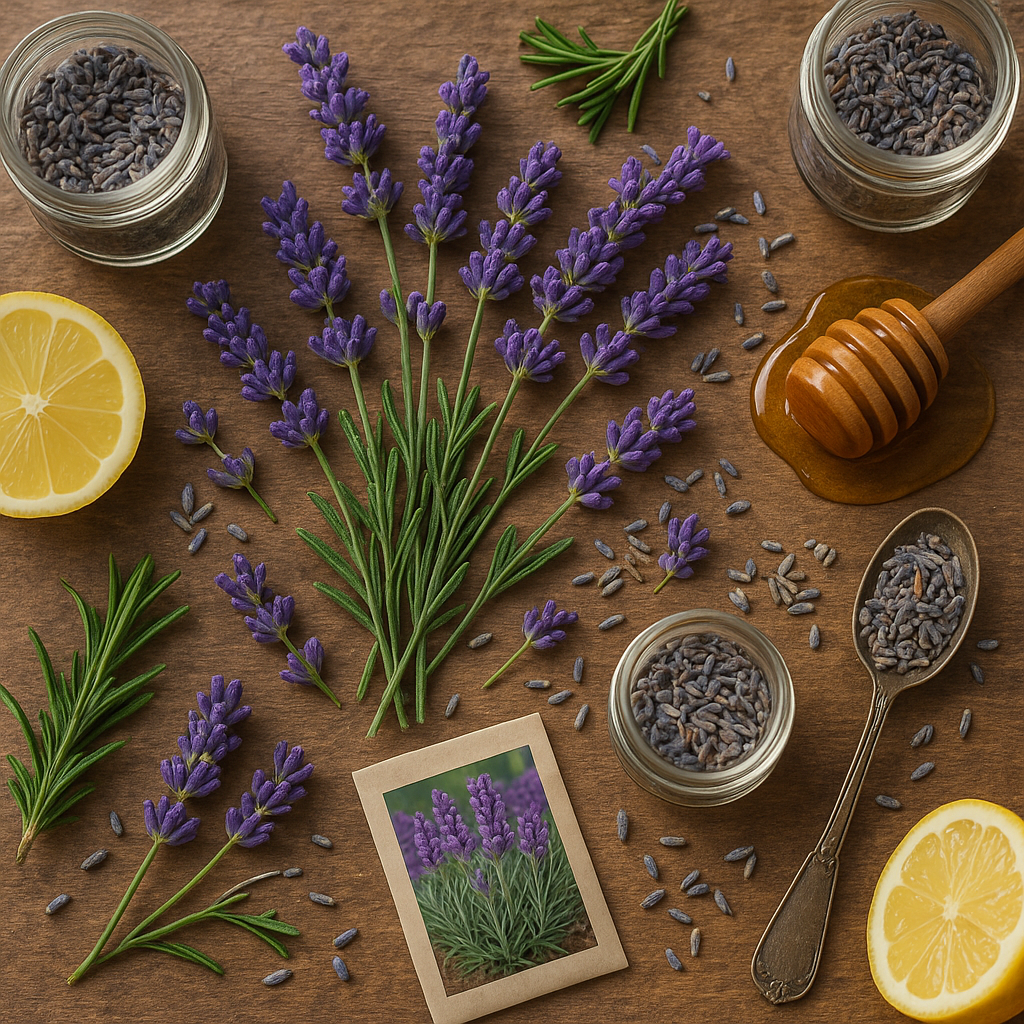Introduction to Culinary Lavender
Cooking with lavender is becoming increasingly popular among adventurous home cooks eager to add an unexpected twist to their favorite recipes. While many know lavender as the soothing flower behind fragrant sachets and calming teas, this beautifully hued herb has a culinary history that spans centuries. However, it’s important to note that not all lavender varieties are suited for the kitchen. Culinary lavender—typically English varieties like Lavandula angustifolia—is specifically grown for safe consumption. Compared to ornamental lavenders, these types have a sweeter, more delicate flavor with lower camphor content, making them ideal for food and drink.
What makes cooking with lavender so appealing is its ability to add both color and a subtle, floral note that is fresh, slightly sweet, and gently herbaceous. Imagine lemon-lavender shortbread or creamy honey-lavender ice cream; the blossoms elevate these desserts with their unique perfume. But lavender is surprisingly versatile, shining in savory dishes as well—think roasted chicken with a hint of lavender or a homemade herbes de Provence blend transforming simple grilled vegetables. The key is restraint: just a pinch of culinary lavender can add depth and intrigue to both sweet and savory creations without overwhelming the palate.
With its versatility and distinctive flavor profile, cooking with lavender invites you to explore a world of creative recipes, from infused sugars and salts to main dishes and cocktails. If you’ve been curious about trying new ingredients, lavender is a floral secret worth discovering in your kitchen.
Choosing and Preparing Edible Lavender

Not all lavender is suitable for the kitchen, so it’s important to understand what makes a variety “culinary.” Culinary lavender refers to specific types that offer a sweet, floral taste without the soapy or camphor notes found in those meant for fragrance. English lavender (Lavandula angustifolia) is the gold standard, prized for its mellow, complex flavor that works beautifully in both sweet and savory dishes. Popular culinary cultivars include ‘Munstead’ and ‘Hidcote.’
When sourcing edible lavender, look for products labeled as “culinary grade”—these are grown and processed specifically for consumption and are free from pesticides or chemical treatments. You can find dried culinary lavender online, in spice shops, or at some farmer’s markets. For peak freshness and control, growing your own is especially rewarding.
Plant lavender in well-draining soil in a sunny spot. Harvest when the buds are vibrant but not fully opened—this stage delivers the best flavor and aroma. To safely prepare lavender:
- Cut stems with clean garden shears, leaving some growth to encourage regrowth.
- Shake the stems gently to remove any insects, then triple-rinse under cool water.
- Remove the buds from their stems—these are the parts used in recipes.
For drying, tie small bunches together and hang them upside down in a cool, dry, well-ventilated area away from direct sunlight, or spread buds on a screen. Once fully dry, store the buds in an airtight container away from heat and light.
Always start with small amounts in recipes, as culinary lavender has a strong flavor—a little goes a long way. With the right variety and careful preparation, edible lavender can add a delicate, sophisticated twist to everything from baked goods to herbal teas.
Flavor Profile and How to Use Lavender in Cooking
Lavender adds a unique, aromatic flavor to dishes, offering floral notes with hints of mint, citrus, and even rosemary, thanks to its close relation to those herbs. Its fragrance is pleasantly sweet and slightly woodsy, but also quite potent, so a little goes a long way—too much lavender can quickly tip a dish into bitterness or make it taste soapy.
To successfully harness lavender’s charm, start with small amounts (often just a pinch or two) and taste as you go. Dried culinary lavender is less intense than fresh blooms, but moderation is still key.
This herb pairs beautifully with other garden staples like rosemary and thyme, and it complements bright flavors from lemon or orange, as well as the smooth sweetness of honey—think lavender-infused sugar, honey, or even a citrus-lavender shortbread cookie.
To avoid common pitfalls, always use culinary-grade lavender (not ornamental varieties, which can be too strong or treated with chemicals), and keep it as a subtle accent rather than the main focus. Steeping lavender in cream, sugar, or simple syrup can infuse recipes gently, letting you strain the buds out and keep flavors delicate.
Remember, lavender works best when layered with other flavors rather than standing alone, adding a mysterious, garden-fresh lift to both savory and sweet dishes without overpowering them.
Culinary Uses
Lavender adds a unique, floral aroma that can transform both sweet and savory recipes, making it a versatile herb in the kitchen. Traditionally, lavender has shined in French cuisine—think of Herbes de Provence, a classic blend often used to season roasted meats, vegetables, or even as a rub for lamb, adding subtle earthy notes.
In the world of desserts, lavender finds its way into shortbreads and scones, lending a delicate hint of perfume, while lavender-infused honey or sugar can elevate simple pound cakes, lemon bars, or creamy panna cotta. For something more modern, consider stirring dried lavender buds into homemade ice creams or whipping up lavender lemonade for a refreshing summer drink.
Teas are another gentle introduction: dried lavender pairs well with black or green tea, soothing nerves with every sip. If you’re looking to experiment, try infusing olive oil with a few sprigs of dried lavender to drizzle over potato salad, or stir lavender blossoms into a vinaigrette for a floral twist on salads.
Culinary creativity also shines in syrups—add lavender syrup to coffee, cocktails, or use it to moisten cake layers before assembly. For bread bakers, a sprinkle of lavender in focaccia or a rustic boule adds intrigue without overpowering.
The key is restraint; too much lavender can taste soapy, but just the right amount—especially when paired with citrus, honey, or herbs like rosemary—delivers a sophisticated, unmistakably Provençal flavor. If you’re new to lavender, start small: try it in compound butters or blend it with sea salt for finishing grilled fish or poultry.
Whether in classic French confections like lavender crème brûlée or in cutting-edge pastry experiments, this beautiful bloom proves itself equally at home in sweet treats and hearty entrees alike.
Storing and Preserving Culinary Lavender
To keep culinary lavender fresh and flavorful, proper storage is key. For fresh lavender, wrap the stems in a slightly damp paper towel, place them in a zip-top bag, and store them in the fridge—this keeps them vibrant for up to a week.
If you want to preserve lavender longer, drying is a simple method: tie small bundles with string and hang them upside down in a cool, dark, well-ventilated area. Once completely dry, remove the buds and store them in an airtight container away from sunlight and heat—glass jars work especially well and help lock in the essential oils.
You can also infuse dried lavender in sugar for delicate desserts; just layer clean, dry lavender buds between sugar in an airtight jar and let it sit for a couple of weeks, shaking occasionally.
For a savory twist, infuse dried buds in olive oil by gently warming them together, then straining and bottling the oil for use in dressings and marinades.
Freezing is another preservation trick: spread clean, dry buds on a baking sheet, freeze, then transfer them to an airtight container for up to six months.
With these techniques, you can savor the floral, aromatic notes of culinary lavender well past the harvest season.
Easy Lavender Recipes to Try

Lavender isn’t just for gardens and sachets—it can add a unique, fragrant twist to your kitchen adventures. Start with a soothing lavender tea: simply steep a teaspoon of dried culinary lavender buds in hot water for about 5 minutes, then strain and sweeten with honey.
For a refreshing summer sip, try lavender lemonade—combine lemon juice, water, sugar, and a homemade lavender syrup (simmer equal parts sugar and water with 2 tablespoons of lavender buds, then strain).
If you’re looking to bake, lavender shortbread cookies are a great beginner project: mix a teaspoon of finely chopped lavender buds into your favorite shortbread dough, letting the floral notes subtly elevate the classic cookie.
For something savory, roast chicken with lavender is both simple and impressive; mix lavender with rosemary, thyme, garlic, and olive oil, then rub it over the chicken before roasting.
When cooking or baking with lavender, remember that a little goes a long way—a pinch more or less can dramatically alter the flavor. Start with the minimum amount suggested in any recipe, taste, and adjust to your liking.
If using fresh lavender from your garden, ensure it’s culinary-grade (Lavandula angustifolia is a safe bet), rinse it gently, and strip the buds from the stems.
Feel free to experiment with lavender in other foods: sprinkle a bit on roasted vegetables, blend into homemade ice cream, or stir into a fruit compote for added depth. Lavender pairs particularly well with lemon, honey, and berries, but don’t be afraid to try new combinations.
The key is to enjoy the process and let your palate guide you—before you know it, lavender will be a staple in your spice cabinet!
Lavender in the Kitchen
Culinary lavender adds a fragrant, floral twist to your dishes, but it’s important to use it safely and wisely. Always choose food-grade lavender, such as Lavandula angustifolia, because some varieties—or decorative lavender from craft stores—may contain pesticides or are not intended for consumption.
Worried about allergies? Lavender is generally safe for most people, but if you have sensitivities to herbs, try a small amount first and watch for any reactions.
Use a light hand—start with 1/4 to 1/2 teaspoon of dried buds for a typical recipe, as the flavor can quickly become overpowering or taste soapy. If your dish ends up with a bitter edge, try balancing it by adding more sugar, lemon juice, or a creamy element, or dilute the batch if possible.
Remember, a little goes a long way. Lavender shines in baked goods, teas, and even savory dishes like roasted chicken or potatoes when used sparingly. Don’t be afraid to experiment with small batches to find your perfect balance.
For fresh ideas and inspiration, there are countless blogs, cookbooks, and YouTube channels dedicated to cooking with edible flowers. Dive in, and let lavender elevate your kitchen creations!
